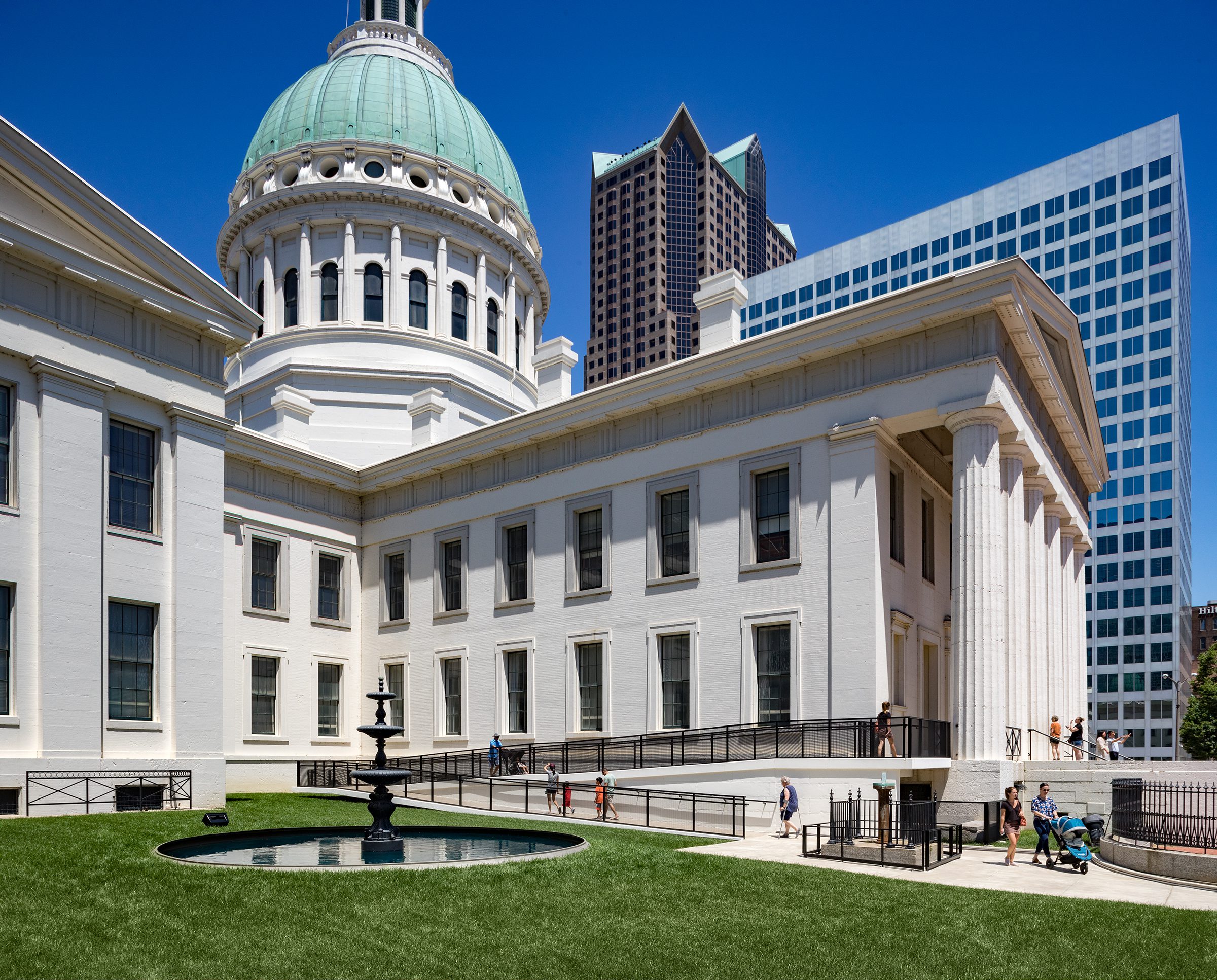There’s a symmetry to Amy Gilbertson’s work and her leadership of the firm in which she does that work: a passion for making existing structures and conditions better.
In her practice, that passion drives her focus on historic renovation projects. She has been involved with several high-profile buildings and sites.
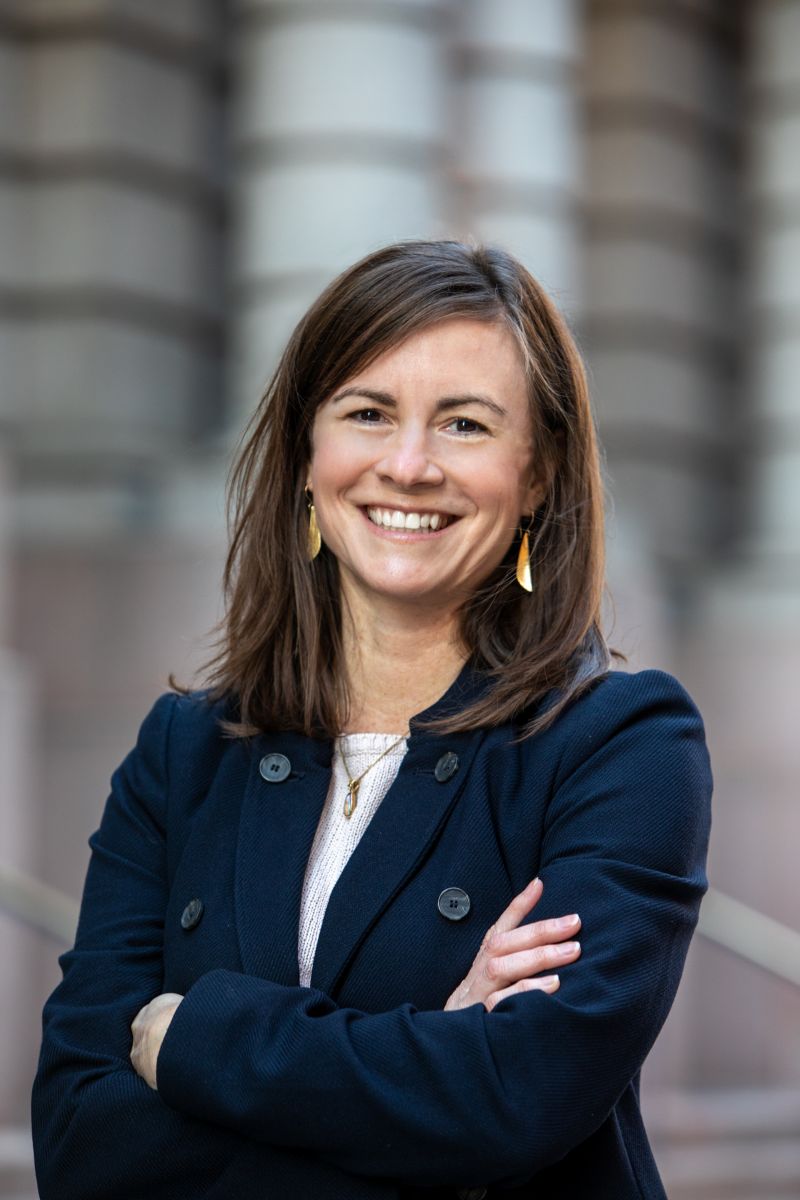
As a leader — a principal at St. Louis–based Trivers — it means making her firm look and feel different than the one she first joined fresh out of the University of Michigan.
“I love taking something that has been forgotten or isn’t running on all cylinders and helping it be the best that it can be,” says Gilbertson, M.Arch ’01. “Finding and celebrating the beauty in its history, and bringing it back to life.”
Gilbertson first discovered that love on one of her first projects as a new associate at Trivers. The renovation of the Old Post Office, an iconic building that fills an entire block in St. Louis, involved close collaboration with state and federal agencies, including the Department of the Interior, since it is a National Historic Landmark. Built in 1872 and designed by Alfred Mullett, who also designed the Eisenhower Executive Office Building in Washington, D.C., the Old Post Office is one of the few Second Empire–style buildings still in existence in the United States.
Today, it is a vibrant mixed-use building that anchors an equally vibrant surrounding area. It’s home to the Missouri Court of Appeals, Webster University, the St. Louis Business Journal, St. Louis Public Library, the Attorney General, and the Missouri Secretary of State.
But when Gilbertson first visited the building, it was not somewhere that people wanted to be. It was vacant, along with most of the buildings in the vicinity, creating an atmosphere where people didn’t feel safe walking, much less want to spend time there for work or leisure.
The project was important not only in terms of the building but the neighborhood. “The building’s history made it significant, and I got to dive into that as our team figured out how to change as little of the historic fabric as possible while meeting modern needs,” Gilbertson says. “And then it was eye-opening to see what that project could do for the community because it became a catalyst for the surrounding buildings.”
As she gave the Old Post Office project her all, on nights and weekends over a few years, it solidified her path within the field of architecture. “I was working on it more and more because I loved it so much. It sparked my passion for historic renovation.”
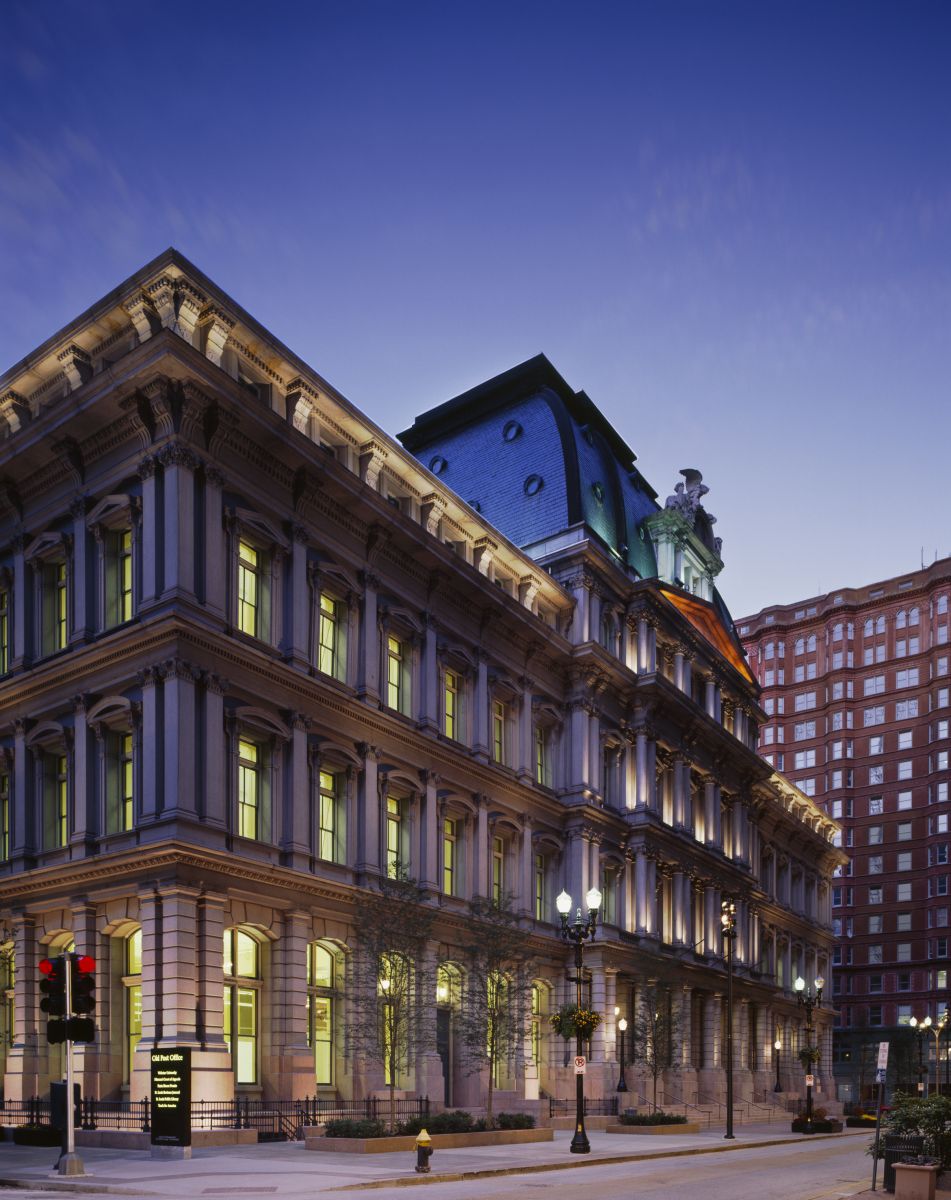
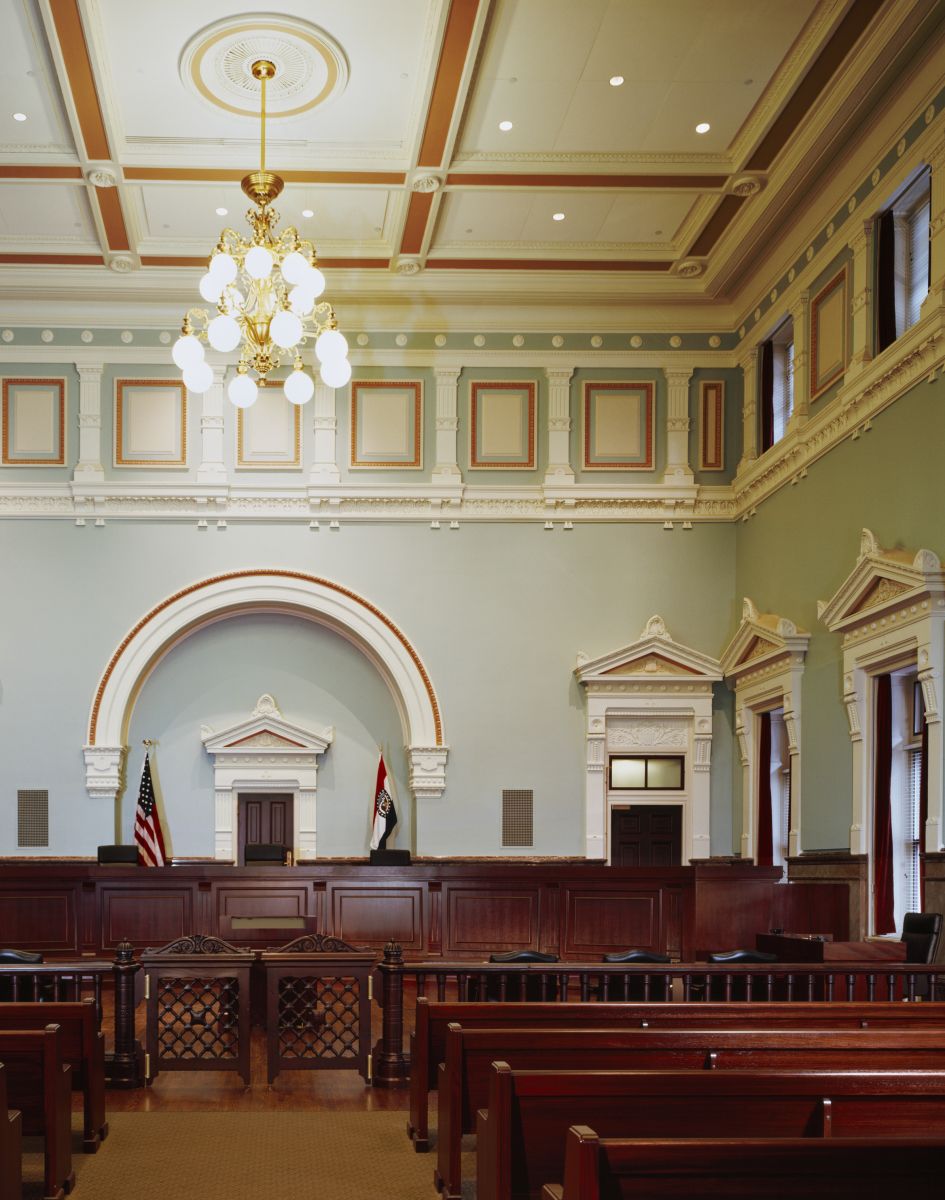
The Old Post Office in St. Louis is one of the few Second Empire–style buildings still in existence in the United States.
Within a year of completing the renovation, however, Gilbertson chose to leave Trivers and join a startup firm in St. Louis. Yes, she had found her passion. But she was at a crossroads.
The startup provided flexibility for raising her growing family, as well as holistic involvement with the firm’s projects, which included historic renovations of sites throughout St. Louis — the firm’s new headquarters among them. “I jumped in on things like financing and scheduling in addition to design,” Gilbertson says, noting that for the firm’s new studio, “we were the owners, the developers, the contractors, and the architects. Through that experience, I had a much greater exposure to the actual business practice of architecture.”
After eight years she returned to Trivers, but now she has the ability to honor the firm’s legacy while helping to guide it toward a more inclusive and vibrant future. Gilbertson is one of three principals, and as the only female leader, she is spearheading a culture shift that is making what was once an anomaly into the norm.
When Gilbertson first joined Trivers in 2001, she was one of just a few female architects. She was only the second employee — and the first architect — to have a baby in the firm’s 30-year history. Now she and her partners are determined to make Trivers a place that offers the flexibility its employees need to thrive and to break the mold of what architecture firms traditionally have looked like.
The firm has a roughly even gender split, and the team for one of its biggest projects at the moment has seven women and one man. “He says he doesn’t even notice unless I bring it up,” Gilbertson says of her male colleague, “but I bring it up all the time because it’s amazing.”
In 2020 Trivers completed its first JUST Label — a platform through the International Living Future Institute for voluntary disclosure of organizational policies that improve social equity and enhance employee engagement. The firm also revamped the EDI (equity, diversity, and inclusion) section of its website recently, leading with “We stand together committed to a future that welcomes all, hears all, values all, and offers opportunities to all. Period.”
For Gilbertson, who recalls early in her career being taken to meetings when there was a female client, part of this commitment is making sure all of her employees have experiences that will enrich their careers. “In those situations, my gender benefited me because it gave me valuable face-to-face time with clients,” she says, “so I think strategically about creating those same opportunities for everyone in our firm.” It’s part of an intentional effort to “know each other better and to support each other better, which then allows us to challenge each other and create better work,” she adds.
Although Gilbertson jokes that she was afraid she had hit her professional peak with the Old Post Office renovation 15 years ago, she recently received St. Louis CNR’s Top 20 Women in Construction award. She also is one of the country’s first 30 Fitwel ambassadors and teaches the Architect as Entrepreneur + Leader course at Washington University in St. Louis.
Her portfolio continues to be filled with the kinds of projects that first captivated her when she began practicing.
Shortly after returning to Trivers in 2014, Gilbertson began leading the renovation of the Old Courthouse, which is part of Gateway Arch National Park. Two landmark cases that eventually went to the U.S. Supreme Court originated there: Dred Scott, a slave, sued for his freedom, and Virginia Minor, a suffragist, sued for the right to vote. Gilbertson also is working on the Old State Capitol in Springfield, Illinois, where presidential candidate Abraham Lincoln gave his “House Divided” speech, and she is serving as the lead historic architect for the renovation of the Moss Federal Building in Salt Lake City.
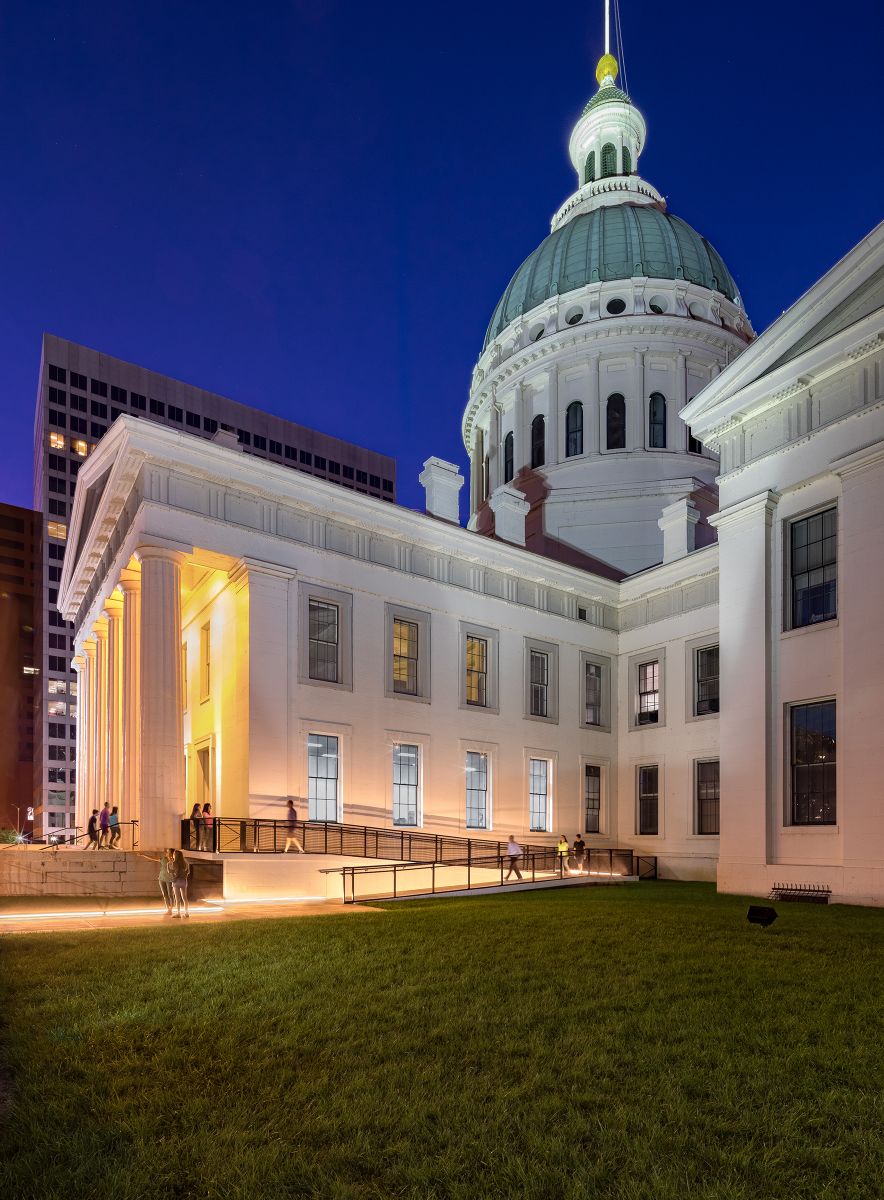
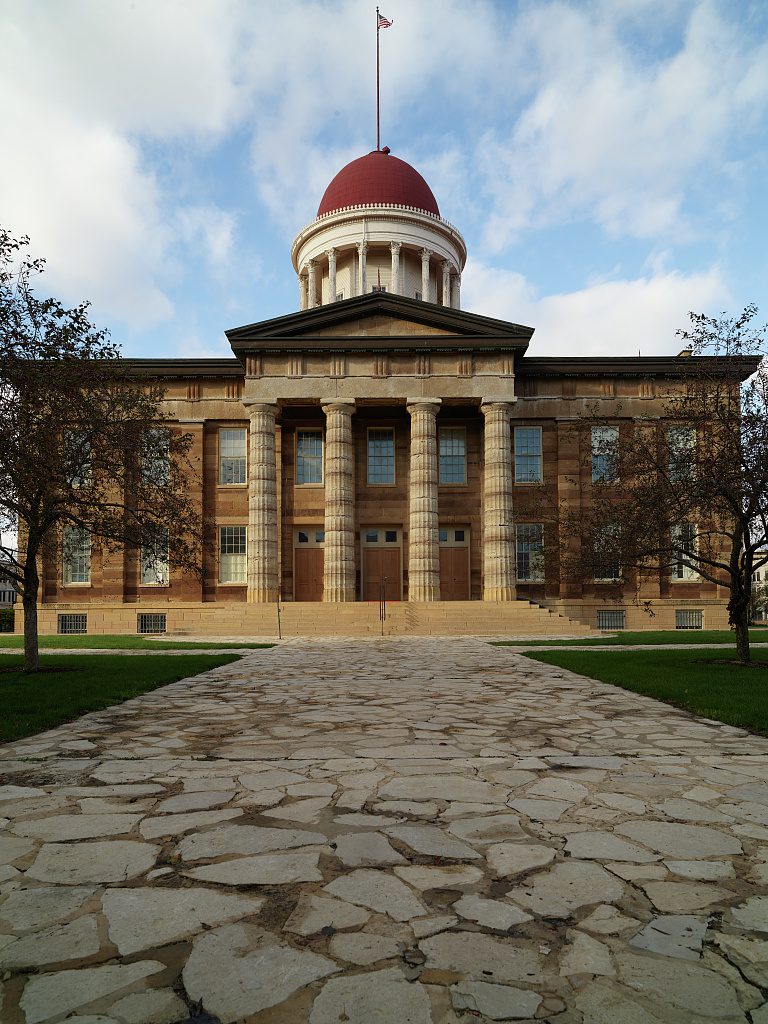
The Old Courthouse (left) and Old State Capitol (right) have witnessed significant moments in U.S. history.
While many architects dream of creating something from scratch with a blank slate, Gilbertson is most passionate about revitalization. Whether discussing the future of her firm or the future of a historic building, leveraging the inherent beauty and legacy of a place and ensuring its longevity for future generations is where she finds inspiration and the drive to make a difference.
“I love being part of projects with a rich history and long legacy,” she says. “With our work and our practice, we are being respectful of what has come before while ensuring what we build is useful and meaningful now and in the future.”
— Amy Spooner

